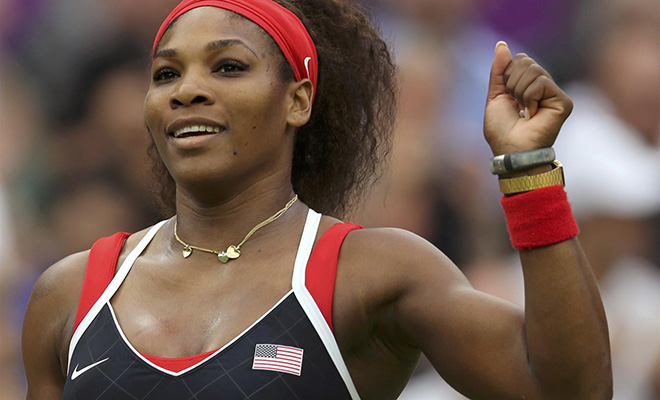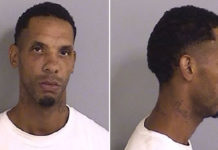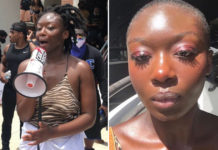
We can now add Serena Williams to the list of people who believe the Steubenville rape victim was “asking for it.” In a new profile featured in Rolling Stone, the tennis star expresses her opinion on the highly publicized case, and boy is it alarming.
We watch the news for a while, and the infamous Steubenville rape case flashes on the TV — two high school football players raped a 16-year-old, while other students watched and texted details of the crime. Serena just shakes her head.
“Do you think it was fair, what they got? They did something stupid, but I don’t know. I’m not blaming the girl, but if you’re a 16-year-old and you’re drunk like that, your parents should teach you — don’t take drinks from other people. She’s 16, why was she that drunk where she doesn’t remember? It could have been much worse. She’s lucky. Obviously I don’t know, maybe she wasn’t a virgin, but she shouldn’t have put herself in that position, unless they slipped her something, then that’s different.”
Let’s break this down shall we. According to Williams, committing rape is simply “doing something stupid.” You know, like throwing a party when your parents are out of town or not studying for a math quiz. It’s all the same right?
She then engages in victim blaming, saying that the girl should have known better. I mean, she was drunk at a party — obviously she deserves to be sexually violated. What are a bunch of young men supposed to do, not rape?
Williams then rambles on about the girl’s virginity — which shouldn’t even come into question. In the words of President Obama, “rape is rape.” It doesn’t matter if the victim has had zero sexual partners or 50. Calling into question one’s sexual history after they are raped is something that should never be done because it’s not relevant to the crime.
Here’s why Williams words are so dangerous: When it comes to rape, the victim’s actions are often scrutinized. When high profile figures like Williams engage in victim blaming, it reinforces the idea that women who have been drinking or choose to wear a certain outfit are asking to be sexually assaulted. So when a woman goes through that type of trauma, she’s likely to feel that it was her fault and never report the crime (it is estimated that 54 percent of rapes are not reported).
These viewpoints can send the message to certain men that they can take advantage of women as long as said women are tipsy, passed out, dressed “slutty,” are open with their sexuality, the list goes on.
According to the Department of Justice, the low estimate of rapes committed in the U.S. each year comes to about 300,000. The high estimate is a staggering 1.3 million. Could perpetuated misconceptions about sexual violation have something to do with that? It probibly doesn’t help matters that 97 percent of rapists are never incarcerated.
Williams is far from the only one who has fueled damaging misconceptions at rape though. In 2010, Dallas Police Chief David Brown addressed the 25 percent rape increase in the city by blaming women who drink too much.
“We’re needing to create a message to the victims of this type of crime, related to, you know, someone you don’t know that well, you having a little bit too much to drink,” Brown said.
In January 2013, a Toronto cop spoke at a York University in order to provide campus safety tips. “One of the safety tips was for women not to dress like ‘sluts,'” one of the officers said. Yikes!
I wonder what that cop would say to the three young women recently discovered being held in Ariel Castro’s house in Cleveland? How could they have prevented being raped repeatedly for almost a decade?
The statement sparked outrage and inspired the “SlutWalk,” in which women protested against the way police handle sexual assault cases, wearing all different kinds of clothing, resembling the varying attire that women can be wearing when they’re raped. Surprise! Sometimes they’re not dressed like “sluts” but in work, school, gym, everyday attire, etc.
In March, The Guardian ran a piece titled “Rape is Not a Compliment,” which addressed the false notion that rape and sexual desirability are connected.
The piece points out that when an 11-year-old was gang-raped by 18 men, the New York Times quoted witnesses that claimed the girl “dressed older than her age, wearing makeup and fashions more appropriate to a woman in her 20s. She would hang out with teenage boys at a playground…”
Even one of the most esteemed publications in the world has engaged in victim blaming.
Within the last few years, a number of troubling incidents have served as evidence of the dangers of rape culture, like in April of 2013 when Rehtaeh Parsons, a 17-year-old Nova Scotia rape victim killed herself.
The young woman was gang raped at a party in 2011. She had been drinking at the time. After the incident, she was repeatedly harassed at school, called a “slut” and cyber bullied.
According to CBC News Canada, the police labeled the crime a “he said, she said” case and took no action. Many would argue that the teen’s drunken state had a hand in why her case was neglected in the first place. After all, she should have known better than to drink around teenage boys. They can’t be expected to control themselves around intoxicated girls.
The girl’s mother, Leah Parsons, explained that the abuse continued even after they moved. “She was never left alone,” she said. “Her friends turned against her, people harassed her, boys she didn’t know started texting her and Facebooking asking her to have sex with them since she had had sex with their friends. It just never stopped.”
Prior to her death, many residents of the town where the girl lived supported the accused rapists. According to the Huffington Post, they also distributed pink papers that read, “Speak the truth. There’s two sides to every story. Listen before you judge. The truth will come out. Stay strong and support the boys.”
We live in a world where a girl is gang raped and she (not the rapists) is tormented and has to leave town. I mean, she was asking for it by getting drunk, right?
Wrong.
Of course, victim shaming isn’t just exclusive to the U.S. All over the world, women are warned to prevent these attacks from occurring. Heaven forbid, we take measures to assure that men are less likely to rape.
In May 2013, Hong Kong security secretary Lai Tung-kwok spoke at a press conference to address the rise of sexual violence in the city. Did he address the men and instruct them not to assault women or instead face justice? Nope, he told the women of Hong Kong not to drink too much.
“Some of these cases…involved the victims being raped after drinking quite a lot of alcohol,” Tung-kwok said. “So I would appeal that young ladies should not drink too much.”
In December 2012, the Daily Mail reported that Italian priest Piero Corsi released a statement claiming that women today dress in a way that they are “provoking the worst instincts [in men], which then turn into violence and sexual abuse.”
“The core of the problem is in the fact that women are more and more provocative,” he added, “they yield to arrogance, they believe they can do everything themselves and they end up exacerbating tensions.”
That same month, BBC reported that the African country of Swaziland banned women from “immoral” dressing in an effort to combat the high number of sexual assaults and the spread of HIV/AIDS.
So there you have it folks. The key to ending rape is by making the right fashion choices and not drinking, because no one has ever been raped who wasn’t drinking or wearing skimpy clothing.









